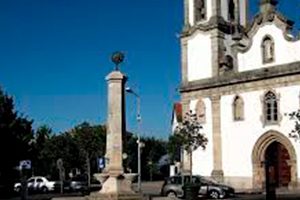
Covilhã
Land of the wool industry, worker nature, birthplace of historical personalities and today a university city, Covilhã is located on the southeastern slope of Serra da Estrela.
With a rich history, the past of Covilhã has its genesis in the Roman times of the Iberian Peninsula, as a Lusitanian fort that later evolved into a Roman fortress (Cava Juliana). It is with D. Sancho I that Covilhã sees its first official charter. With the Renaissance, the population increases exponentially and the activities of the primary sector give way to commerce and the beginning of industrial activity. D. Henrique, infante, takes the title of Lord of Covilhã and the population of Covilhã actively collaborates on the path of the Discoveries, but the cast of historical figures does not stop here: Pêro da Covilhã, Mateus Fernandes, José Vizinho, Francisco and Rui Faleiro , Frei Heitor Pinto, among others, are names that figure in the history of the city.
Canhoso
Until administratively integrating the Union of Parishes of Covilhã and Canhoso, the Parish of Canhoso was the most recent of the Municipality of Covilhã, created in June 1997.
Of the different toponymic versions of the designation, the most implemented is based on the fact that there was an ancestral family named Canhoto that would have derived to Canhoso.
The Chapel of Nossa Senhora de Fátima is the most current patrimonial example.
Patrimony (Covilhã)
Quinta do Prado
Set of furnaces and cylindrical wells from the former dyeing house of the Real Fábrica de Panos da Covilhã
Palace Garden House of Ministers or House of Magistrates
Chapel of Santa Cruz (Sítio do Calvário) or Chapel of Calvário
Walls of the City of Covilhã
Pillory of Covilhã
Building at Rua 1º de Dezembro, nº 10 – Medieval Cistern)
Church of Mercy in Covilhã
Cine Theater Historic Center of Covilhã
São Martinho Chapel
Chapels of Nossa Senhora do Refúgio, Santo António and São João
Convent of Santo António
Monument to Our Lady of Conception
Alexandre Aibéo Park in Covilhã
Section of Roman pavement next to the Covilhã railway station
Walls of Covilhã – built by order of D. Sancho I, later enlarged by D. Dinis. They were badly damaged by the 1755 earthquake. Currently, only a few sections of this building remain.
